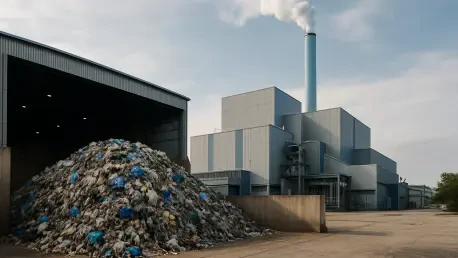I’m thrilled to sit down with Christopher Hailstone, a seasoned expert in energy management and renewable energy, with a deep focus on electricity delivery and grid reliability. As our Utilities expert, Christopher brings a wealth of knowledge to the table, especially when it comes to innovative solutions like waste-to-energy (WTE) technologies. Today, we’re diving into FCC Environmental Services’ latest venture in Pinellas County, Florida, where they’ve secured a significant contract to operate a WTE facility. Our conversation explores the impact of this partnership, the technology behind turning waste into power, and how it contributes to sustainable waste management and community development.
Can you tell us about FCC Environmental Services and the scope of your work across the United States?
Absolutely, Carlos. FCC Environmental Services is based in Houston and focuses on providing environmental, waste, and recycling solutions. We operate in seven states, serving over 900,000 residential homes and countless commercial customers. Our work ranges from traditional waste collection to advanced recycling programs and energy recovery initiatives. We’ve been in the industry for years, building on a foundation of sustainable practices, and we draw from the global expertise of our parent company, which has a strong presence in waste-to-energy operations worldwide.
What significance does the new contract with Pinellas County hold for FCC Environmental Services?
This 10-year, $704 million contract is a major milestone for us. It’s not just about expanding our footprint in Florida, which is already our largest operational hub in the U.S., but also about deepening our commitment to renewable energy. Taking over the Pinellas County WTE facility strengthens our position as a leader in sustainable waste management and allows us to bring our expertise to a community that shares our vision for environmental responsibility.
How would you describe the role of a waste-to-energy facility and its importance in today’s world?
A waste-to-energy facility, like the one in Pinellas County, is a game-changer. It processes around 2,700 tons of solid waste daily, converting it into renewable electricity through incineration and energy capture systems. Instead of piling up in landfills, waste becomes a resource. The environmental benefits are huge—reducing landfill dependency, cutting greenhouse gas emissions, and even recovering metals for recycling. It’s a practical way to address waste challenges while contributing to cleaner energy production.
What will FCC’s responsibilities be in managing the Pinellas County WTE facility?
We’ll officially take over full operations on January 1, 2026, but the transition process kicks off on November 1. During this period, we’ll work closely with the current team to ensure a smooth handover, focusing on maintaining operational standards. Our role includes day-to-day management, maintenance, and implementing improvements to optimize efficiency. We’re committed to keeping the facility running at peak performance while exploring ways to enhance its environmental impact.
In what ways will this partnership benefit the local community in Pinellas County?
One immediate impact is job creation. We’re bringing on 77 new employees, which boosts the local economy and provides stable employment opportunities. Beyond that, we’re excited to collaborate with Pinellas County on public education initiatives. We plan to raise awareness about recycling, energy recovery, and the benefits of WTE technology, empowering residents to play a part in sustainable waste management.
FCC emphasizes a commitment to sustainable waste management. Can you elaborate on how this facility fits into that mission?
Our mission is to work responsibly today for a better environment tomorrow, and operating this WTE facility aligns perfectly with that. By converting waste into energy, we’re reducing landfill use and promoting renewable energy, which are key pillars of sustainability. With Pinellas County, we aim to set a benchmark for innovative waste solutions, focusing on long-term outcomes like reduced emissions and enhanced recycling rates.
Since this is FCC’s second WTE facility in Florida, what insights from your other operations are you bringing to this project?
Our experience with our first Florida WTE facility has taught us a lot about operational efficiency and community engagement. While each facility has its unique challenges, the Pinellas County operation benefits from proven strategies we’ve developed—like optimizing waste processing and maintaining strong local partnerships. We’ve seen success in balancing energy production with environmental goals elsewhere, and we’re eager to apply those lessons here while tailoring our approach to the specific needs of this community.
What is your forecast for the future of waste-to-energy technology in sustainable waste management?
I’m very optimistic about the future of WTE technology. As communities and governments push for greener solutions, WTE will play a critical role in managing waste and generating renewable energy. I foresee advancements in efficiency and emission controls, making these facilities even more environmentally friendly. Additionally, with growing public awareness and policy support, I expect WTE to become a cornerstone of sustainable waste management, not just in Florida but across the U.S. and beyond.









